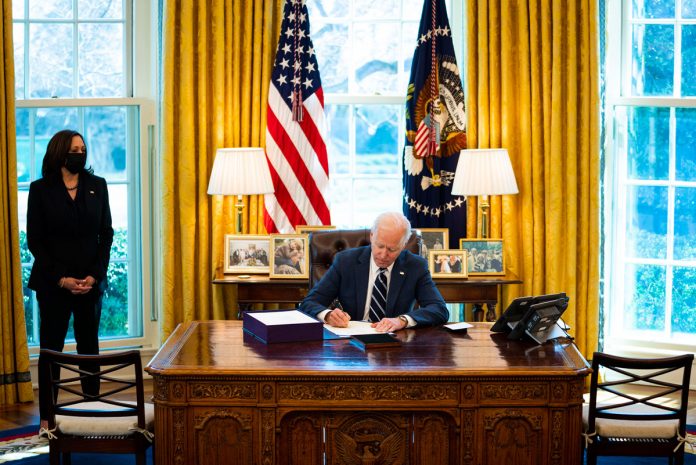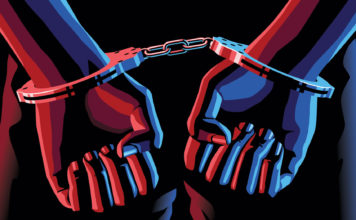
WASHINGTON, D.C. — President Joe Biden signed the $1.9 trillion economic relief package on Thursday afternoon, ushering in an aggressive infusion of federal aid in a far-reaching effort to address the toll of the coronavirus pandemic.
“This historic legislation is about rebuilding the backbone of this country,” Biden said, “and giving the people of this nation, working people, the middle class folks, people who built the country a fighting chance.”
Biden had originally been scheduled to sign the bill on Friday, after it had been reviewed again and printed. But the president and his advisers, aware that low- and middle-income Americans are desperate for the round of direct payments that the bill includes, moved up the timeline to Thursday afternoon.
Ron Klain, Biden’s chief of staff, wrote on Twitter earlier on Thursday that the enrolled bill arrived at the White House on Wednesday night and that the president would sign it a day earlier than planned because they wanted “to move as fast as possible.”
But he added, “We will hold our celebration of the signing on Friday, as planned, with Congressional leaders!”
The president signed the measure in the Oval Office hours before he is set to deliver a prime-time televised address on Thursday night, kicking off an aggressive campaign to inform voters of the benefits that are coming to them through the relief package.
The campaign will include travel by the president and Vice President Kamala Harris across multiple states, events that will feature a wide range of Cabinet members emphasizing the legislation’s themes, as well as endorsements from Republican mayors, according to administration officials.
Biden is set to deliver the Thursday address just after 8 p.m. Eastern time from the East Room of the White House, and said on Wednesday that he planned to “talk about what we’ve been through as a nation this past year.”
“But more importantly, I’m going to talk about what comes next,” he continued. “I’m going to launch the next phase of the COVID response and explain what we will do as a government and what we will ask of the American people.”
The White House’s decision to go out and sell the aid package after its passage reflects a lesson from the early months of the Obama administration. In 2009, fighting to help the economy recover from a crippling financial crisis, President Barack Obama never succeeded in building durable popular support for a similar bill and allowed Republicans to define it on their terms, fueling a partisan backlash and the rise of the Tea Party movement.
Biden starts with an advantage: The legislation is widely popular in national polling. And it will deliver a series of tangible benefits to low- and middle-income Americans, including direct payments of $1,400 per individual, just as the economy’s halting recovery from the pandemic recession is poised to accelerate.
After his address on Thursday night, which is expected to run less than 20 minutes, Biden will headline a weekslong public relations effort. He is set to visit the Philadelphia suburbs on Tuesday, and he and Harris are scheduled to travel to Atlanta next Friday.
Copyright 2021 The New York Times Company














